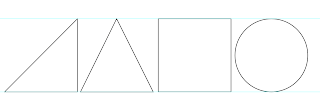Evaluation:
The campaign succeeds in utilising marketing strategies most appropriate to the target demographic which develops the most engaging format in which to communicate with this audience. From further millennial research it was identified that influencer marketing has a profound effect on this demographic as 60% of Millennials have said that they would try a product suggested by a YouTuber and ⅓ consider blogs to be a top media source when researching a purchase. Identifying 'The Anna Edit' as initial blogger to be the face of the campaign entitled 'The Wander Diaries' was appropriate due to her social status within this millennial culture. With over 400,000 subscribers to her Youtube Chanel, this infers Anna will be a strong brand advocate with a high social reach which will convert blog traffic into audience engagement with the 'wander' brand.
The concept of the campaign works positively, inviting lifestyle bloggers, that have strong influence with this millennial demographic, on a sponsored trip in which they are flown to exotic European destinations and asked to document their adventures. This specifically targets the blog audience and demonstrates how the brand can facilitate such aspirational experiences that they will want to engage with so that they can be perceived to have a similar exciting lifestyle. The campaign will be run over a number of episodes, this first episode featuring 'The Anna Edit' targets 3 distinct motivations for travel, adventure, relaxation and culture which succeeds in maximising the travel inspiration and accentuates this brand experience in order to manipulate a strong consumer-brand relationship. This experience was quoted at £6,800 without paid activities demonstrating how the campaign is constructed to exploit this consumer-brand relationship, suggesting to this audience they too can have this experience if they use the brands stress free service however this is largely unobtainable due to the price of the trip making its replication impossible for an average millennial user.
Utilising bloggers with different audiences within the millennial demographic and tailoring travel experiences to that audience, is planned to expand the campaign series and extend this audience engagement developing a strong brand equity within this demographic through the use of these social influencers. This Further generates a brand personality of authenticity through the seemingly unbiased user generated content and culture through the destinations and activities blogged about evoking a more personal consumer brand relationship.
Synthesis:
This campaign generates a high level of contextual synthesis with my research essay developing a strong association with psychological constructs discussed within this dissertation. The marketing strategy of 'the wander travel diaries' is constructed to manipulate a brand personality of authenticity through the use of a brand advocate, creating the perception this sponsored content is more legitimate coming from this high profile brand advocate. The approach of the concept converts this idea of excitement and adventure into brand equity with the audience positively associating the trip with the brand generating a positive consumer brand relationship. The most critical sense of synthesis between this practical example and the theory discussed within the essay is the exploitation of the target audience in order to condition a consumer brand relationship. In associating this experience with the brands service, it is inferred the user can emulate this campaign experience however this experience is valued at £6,800 making it unobtainable for the majority of the brands target audience, exploiting this demographic through an unobtainable fallacy.





































